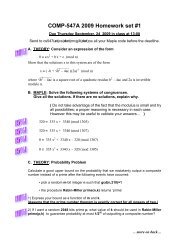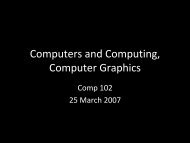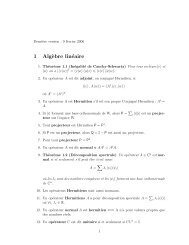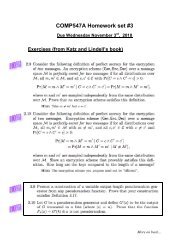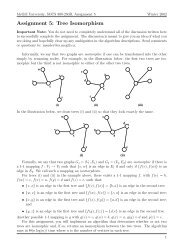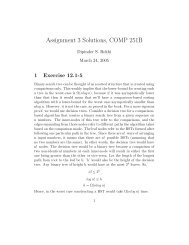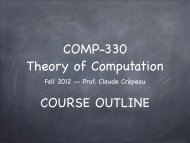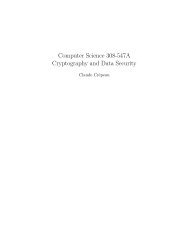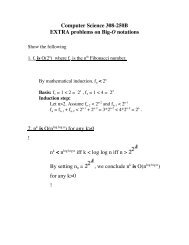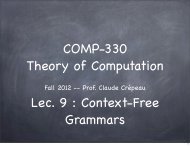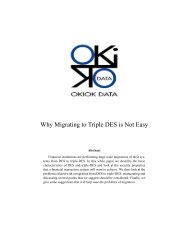Course notes (chap. 1 Number Theory, chap. 2 ... - McGill University
Course notes (chap. 1 Number Theory, chap. 2 ... - McGill University
Course notes (chap. 1 Number Theory, chap. 2 ... - McGill University
You also want an ePaper? Increase the reach of your titles
YUMPU automatically turns print PDFs into web optimized ePapers that Google loves.
Algorithm 2.2 ( Kalai randfact(n) )<br />
1: Generate a sequence n = s 0 ≥ s 1 ≥ s 2 ≥ ... ≥ s l =1by picking<br />
s i+1 ∈ R {1, 2,...,s i },untilreachings l =1.<br />
2: Let r be the product of the prime s i ’s, 1 ≤ i ≤ l.<br />
3: IF r ≤ n THEN with probability r/n RETURN (r, {prime s i ’s}).<br />
4: Otherwise, RESTART.<br />
∏<br />
Theorem 2.4 The probability of producing r at step 2 is M n /r, whereM n =<br />
(1 − 1/p).<br />
p≤n<br />
Thus by outputting r with probability r/n in step 3, each possible value<br />
is generated with equal probability M n r<br />
= M n<br />
r n n<br />
.Theoverallprobabilitythat<br />
some small enough r is produced and chosen in step 3 is ∑ M n<br />
1≤r≤n n<br />
= M n .<br />
Theorem 2.5 lim<br />
n→∞<br />
M n log n = e −γ ≈ 0.5614594836



